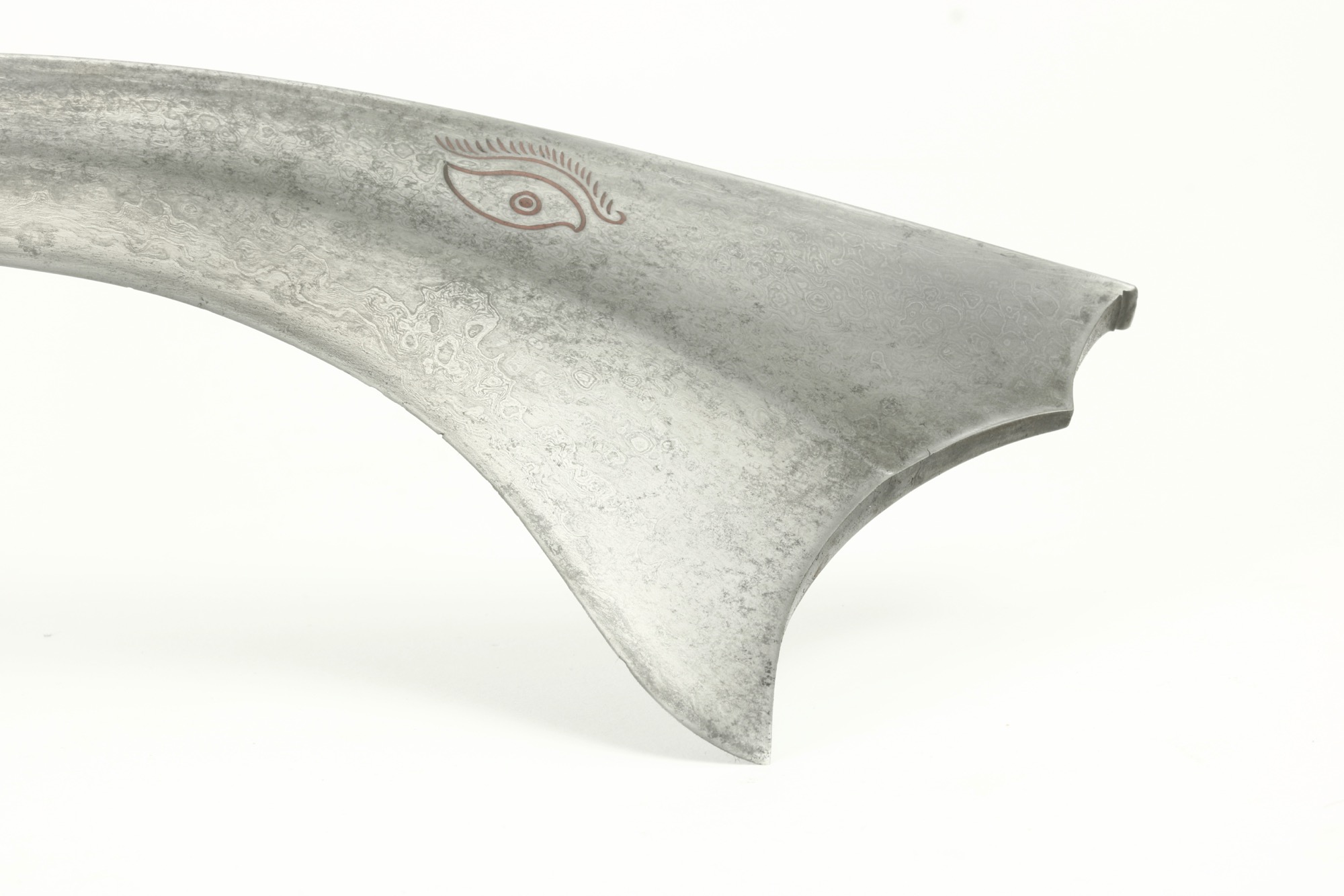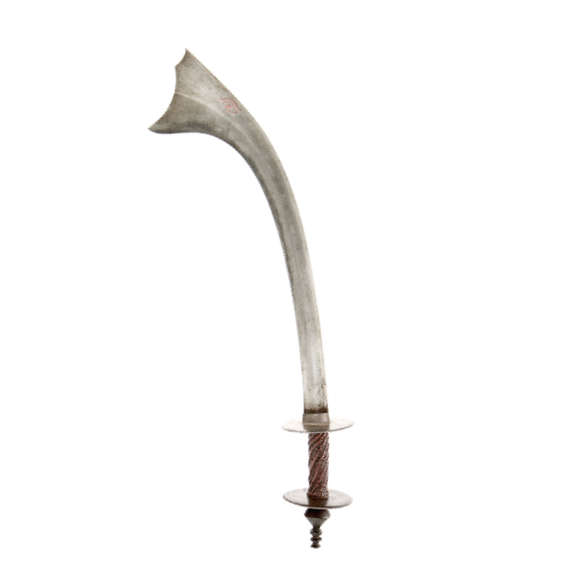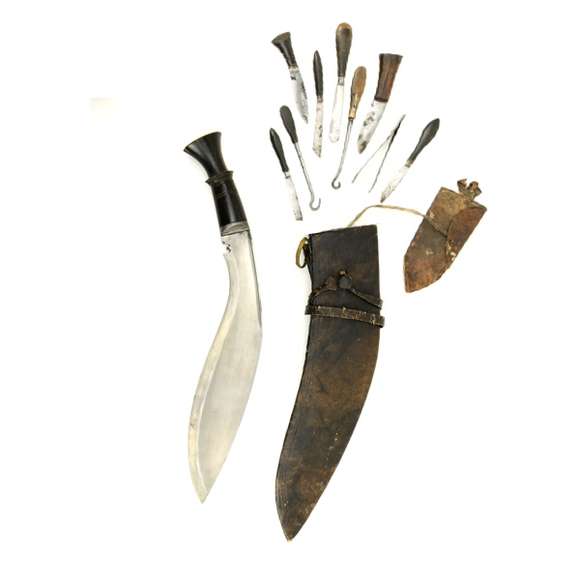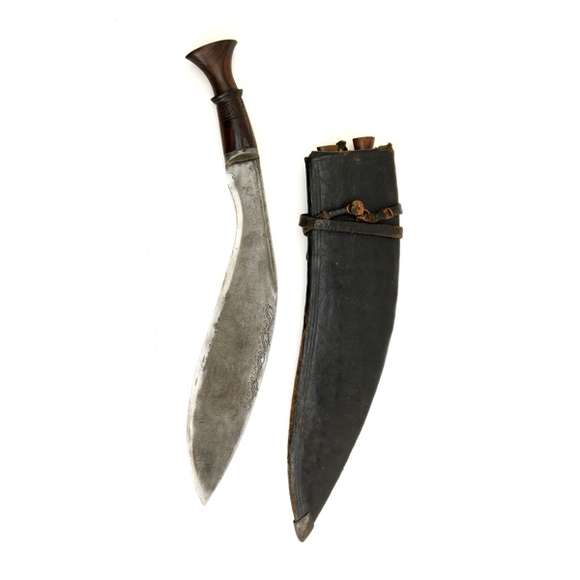Language: Nepalese
Source: Secondary reference
Introduction
The Nepalese kora is a peculiar type of sword that is strongly associated with the Ghurkas of Nepal. It was thought to have developed in the 9th or 10th century, but most examples preserved today date from the 18th and 19th centuries.1

A typical example of the 19th century.
Sold by Mandarin Mansion in 2019.
Short but substantial, with their protruding tip the kora looks and feels rather mace-like. Where sabers minimize the area of contact with their curve so they put more pressure on a small area, the kora does the opposite: The concave edge "captures" anything that is hit with a portion below its point.
While the spine is thick and ensures strength and rigidity, the edge is thin and can be very sharp. Most of the blades are forge folded with a high-carbon steel edge plate and a wood-like grain. Some kora blades show beautifully complex pattern welding.
The hilts usually comprise of a cylindrical grip section between two round discs that protect and confine the hand.
Lord Egerton writes:
"The Nepalese use a larger knife, or sword "Kora" with an inner cutting edge, with which those who use it skilfully are enabled to cut a sheep into two with a single blow" 1

Koras that were said to date from the battle of Kirtipur during the 1760`s.
Bagbhairab Temple, Kirtipur, Kathmandu, Nepal.
From: atkinson-swords.com


Notes:
1 P. S. Rawson; The Indian Sword, Herbert Jenkins LTD, London, 1968. Page 53.
2. Lord Egerton of Tatton: Indian and Oriental Arms and Armour. Dover Publications; Revised edition, 2002. Page 100.






